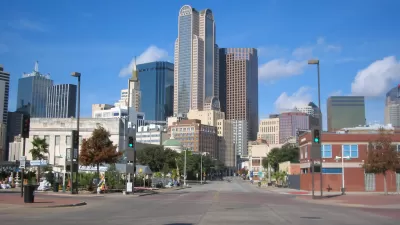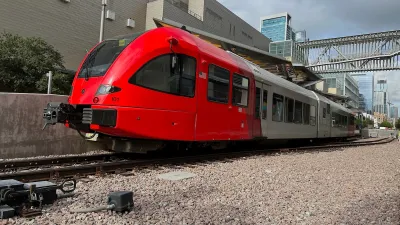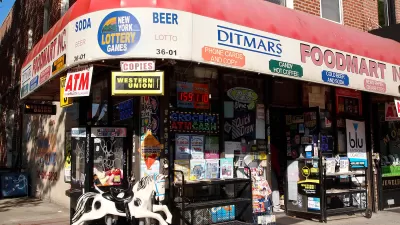Jim Kunstler once said that if the 20th Century was about getting around, the 21st Century is about staying in places worth staying in.
Jim Kunstler once said that if the 20th Century was about getting around, the 21st Century is about staying in places worth staying in. A prescient statement, it seems, as demographic, cultural, environmental, and economic trends continue influence the recovery of walkable urban neighborhoods where live, work, and play happen in close proximity. But despite ongoing, substantive market shifts, conventional city making processes continue to lag behind the demand for places worth staying in. Nonetheless, from Dallas to Brooklyn, Do it Yourself (DIY) urbanists are taking it upon themselves to institute place-based change at the scale urban dwellers understand best: the city block.
The Better Block Project
If you are a blogosphere surfing urbanist, then you have likely stumbled across "The Better Block Project." Carried out by Dallas, Texas urbanists Jason Roberts, Amy Cowan, and a cadre of local change agents, the Better Block effort takes (PARK)ing day one step further by effectively demonstrating how a simple vision and a little sweat equity can ably transform an auto-dominated city block into a vibrant, people-oriented neighborhood center-even if only for a single day. The installation, which cost less than $1,000 to produce, has gone viral across the country and may have seeded more permanent change in the Oak Cliff neighborhood. As always, a YouTube video speaks more than a thousand words:
DoTank:Brooklyn
DoTank:Brooklyn seeks to catalyze local intellectual capital. Yet, rather than dwell on navigating the myriad of political structures that eventually institute change, this informal group of Brooklyn based urban planners, artists, and public space advocates directly produce positive urban interventions at the block scale.
To date, DoTank: Brooklyn has created a digital community board, re-purposed work pallets into fully functional, zero waste urban Adirondack chairs, and have taken to sharing films of New York City's most seductive public spaces. Each project is designed to raise awareness and contribute to a better built environment. And like The Better Block Project, the work of DoTank: Brooklyn demonstrates how harnessing technology, ingenuity, and everyday community resources point the way towards realizing a more livable block, street, neighborhood, and city.
DoTank:Brooklyn - Chair bombingat North 5th and Berry from Aurash Khawarzadon Vimeo.
Whether a temporary café,or a sidewalk installation project, North American cities would do well to view these two efforts not as disruptive code violations, but as signs of true vitality; the presence of an engaged population; a reason to push a more progressive planning agenda; and a mandate to break through the conventional planning process to provide innovative and low-cost solutions that lead to long term, positive change.

Alabama: Trump Terminates Settlements for Black Communities Harmed By Raw Sewage
Trump deemed the landmark civil rights agreement “illegal DEI and environmental justice policy.”

Planetizen Federal Action Tracker
A weekly monitor of how Trump’s orders and actions are impacting planners and planning in America.

The 120 Year Old Tiny Home Villages That Sheltered San Francisco’s Earthquake Refugees
More than a century ago, San Francisco mobilized to house thousands of residents displaced by the 1906 earthquake. Could their strategy offer a model for the present?

In Both Crashes and Crime, Public Transportation is Far Safer than Driving
Contrary to popular assumptions, public transportation has far lower crash and crime rates than automobile travel. For safer communities, improve and encourage transit travel.

Report: Zoning Reforms Should Complement Nashville’s Ambitious Transit Plan
Without reform, restrictive zoning codes will limit the impact of the city’s planned transit expansion and could exclude some of the residents who depend on transit the most.

Judge Orders Release of Frozen IRA, IIJA Funding
The decision is a victory for environmental groups who charged that freezing funds for critical infrastructure and disaster response programs caused “real and irreparable harm” to communities.
Urban Design for Planners 1: Software Tools
This six-course series explores essential urban design concepts using open source software and equips planners with the tools they need to participate fully in the urban design process.
Planning for Universal Design
Learn the tools for implementing Universal Design in planning regulations.
Clanton & Associates, Inc.
Jessamine County Fiscal Court
Institute for Housing and Urban Development Studies (IHS)
City of Grandview
Harvard GSD Executive Education
Toledo-Lucas County Plan Commissions
Salt Lake City
NYU Wagner Graduate School of Public Service






























